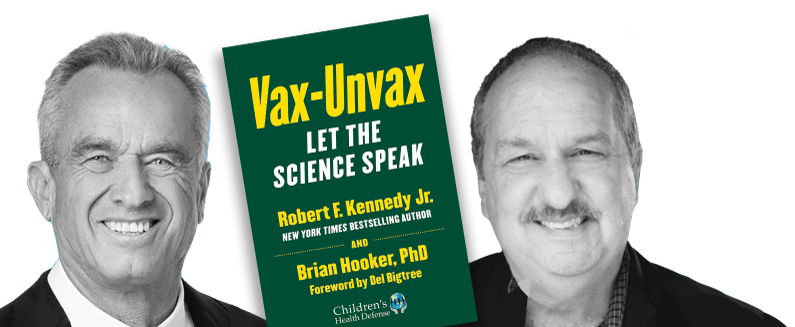Watch ‘Remembering Nearfield’: Short Film About EMR Sickness Wins Cannes Film Award
“Remembering Nearfield” is a 9-minute animated film portraying the “cautionary true story” of its narrator, Corriëlle van Vuuren, who suffered for years with undiagnosed electrohypersensitivity.

Miss a day, miss a lot. Subscribe to The Defender's Top News of the Day. It's free.
A short animated film about electromagnetic hypersensitivity (EHS) that last month won the “Best Health Film” award at the Cannes World Film Festival continues to gain steam, with showings lined up at upcoming international film festivals this fall and throughout 2024.
In just over three months since its release, “Remembering Nearfield” has received 10 awards from international film festivals — in Sicily, Veneto, Brussels, Singapore, Gangtok and Cannes, among others.
“Nearfield” refers to the area close to a source of electromagnetic radiation (EMR) — such as cellphones and wifi transmitters — where there are “strong inductive and capacitive effects” that can harm the human body.
EHS, sometimes called electromagnetic sensitivity (EMS) or microwave syndrome, refers to a “clinical syndrome characterized by the presence of a wide spectrum of non-specific multiple organ symptoms — typically including central nervous system symptoms — that occur following the patient’s acute or chronic exposure to electromagnetic fields [EMFs].”
Miriam Eckenfels-Garcia is director of the Children’s Health Defense (CHD) electromagnetic radiation efforts. She commented on why CHD advocates on behalf of the EMS-disabled:
“We are very concerned about the growing number of people and particularly childrensuffering from some form of EHS/EMS and have sought recognition of the EHS/EMS-disabled’s rights and interests in several legal matters before agencies and the courts.”
CHD.TV aired the film and interviewed its producer, U.K. filmmaker Sean Carney.
Medical establishment ‘ill-equipped to discern’ electromagnetic hypersensitivity
Carney’s 9-minute film is a cautionary true story narrated by Corriëlle van Vuuren — a successful entrepreneur — who tells how she tragically lost everything as her health mysteriously declined and she was eventually diagnosed with EHS.
Carney, whose animation accompanies van Vuuren’s testimony throughout the film, told The Defender, “No public health policy on EHS has yet been formulated and the mainstream medical establishment is still in the dark about it.”
His film reveals how “the medical establishment is inclined to seek other causes rather than electromagnetically induced harm and is ill-equipped to discern whether someone has electromagnetic hypersensitivity,” he said.
“It took years to discover that the protagonist’s health problem was related to electricity and electromagnetic fields, after years of protracted puzzlement and misguided medical advice,” he said. “This highlights a big reason why education and awareness about electromagnetic radiation and EHS matters.”
Although estimates vary, a 2019 analysissuggested that 1.5% of the population experience severe EHS/EMS symptoms, 5% have moderate symptoms and 30% have mild symptoms. That means roughly 2.16 million to 99.7 million Americans are likely affected by EHS/EMS.
Groups for the electrosensitive have “spontaneously formed” in at least 18 countries as of January 2023, said scientists with theInternational Commission on the Biological Effects of Electromagnetic Fields (ICBE-EMF) in an April peer-reviewed report.
A report from the European Economic and Social Committee, referenced in the ICBE-EMF’s report, states:
“According to new estimates, between 3% and 5% of the population are electro-sensitive …
“Exposure to electromagnetic fields has been increasing in recent years, following the expansion of technologies. …
“People [with EHS/EMS] may sometimes suffer the incomprehension and scepticism of doctors who do not deal with this syndrome professionally and therefore fail to offer proper diagnosis and treatment.”
The ICBE-EMF report outlines a number of sensible EMR mitigation measures, including recommending the widespread adoption of fiber optic networks.
We need a ‘global conversation’ about electromagnetic radiation disability
Dariusz Leszczynski, Ph.D., adjunct professor of biochemistry at the University of Helsinki, Finland, in December 2022 called for a consensus debate on whether current global wireless radiation guidelines are sufficiently protecting people’s health.
Carney agreed. Society needs to recognize the problem of electromagnetic pollution’s potential to harm people, especially more vulnerable citizens, such as children and people with elevated sensitivity, he said.
“A lack of education has been an issue,” Carney said. “I believe society is open to learning about these problems and film can play an important role in the process.”
“‘Remembering Nearfield’’s testimony-driven animation powerfully informs on many levels and has real potential to catalyse positive social changes,” he added.
For Carney, a global conversation on EHS/EMS is “long overdue” and would be valuable for changing peoples’ views and behaviors.
“I hope my film can help this to happen,” he said, because “EHS/EMS is a debilitating condition that robs a person of their freedom, limits their mobility, brings on unpleasant symptoms and impairment and reduces employment opportunities and scope for societal participation.”
Since winning the Cannes World Film Festival award, “Remembering Nearfield” has garnered screenings at the Barcelona Indie Awards and the Film Collective Short Film Festival in the U.S., with additional screenings at other international film festivals throughout the fall.
Public screenings of the film will continue into 2024, Carney added.
Watch the film here:



No comments:
Post a Comment